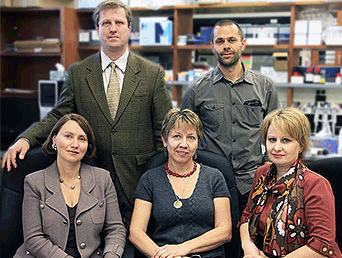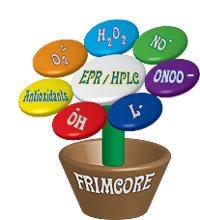| |

|
|
FRIMCORE Lab staff |
The Free Radicals in Medicine Core, FRIMCORE, provides site-specific, selective and reliable measurements of reactive oxygen species (ROS) such as superoxide radical (O2•), hydrogen peroxide (H2O2), nitric oxide (NO•) and peroxynitrite (ONOO−) and various free radical intermediates in cells and tissue for investigators at the Vanderbilt Campus and beyond. Major resources are the Electron Spin Resonance spectrometer (ESR) and HPLC system for quantitative superoxide measurements using spin traps, spin probes, fluorescent probes dihydroethidium and MitoSOX. We are located on the fifth floor of the Preston Research Building. The facility is available to all Vanderbilt faculty and other interested parties. We provide full service for ROS measurements and consultations for ROS-related studies.
Free radicals, the targets of antioxidants, are a highly reactive species, generated during normal metabolism. Overproduction of free radicals or decreased antioxidant defense due to environmental factors including chemicals, cigarette smoke, ultraviolet radiation and genetic factors, may contribute to development of pathological conditions such as hypertension, metabolic syndrome, diabetic, atherosclerosis, aging, Alzheimer's and Parkinson's, cancer and AIDS.
FRIMCORE helps to investigate the molecular mechanisms of pathological conditions, to promote clinical studies of oxidative stress and to develop new antioxidant strategies.
Most biologically relevant radicals are far too short-lived to be directly detected in biological specimens. For this reason, FRIMCORE employs spin traps and hydroxylamine spin probes as the most definitive and quantitative methods for free radical detection. A newly developed HPLC method allows unequivocal, highly sensitive and quantitative detection of superoxide and peroxynitrite by analysis of specific fluorescent products of dihydroethidium, MitoSOX or boronate probes.
FRIMCORE offers the necessary equipment and expertise to provide state-of-the-art measurements of ROS by HPLC, EPR and monochromatic fluorescent plate reader using a board range of the probes and tools for cost-effective, ROS-selective and site-specific analysis.

